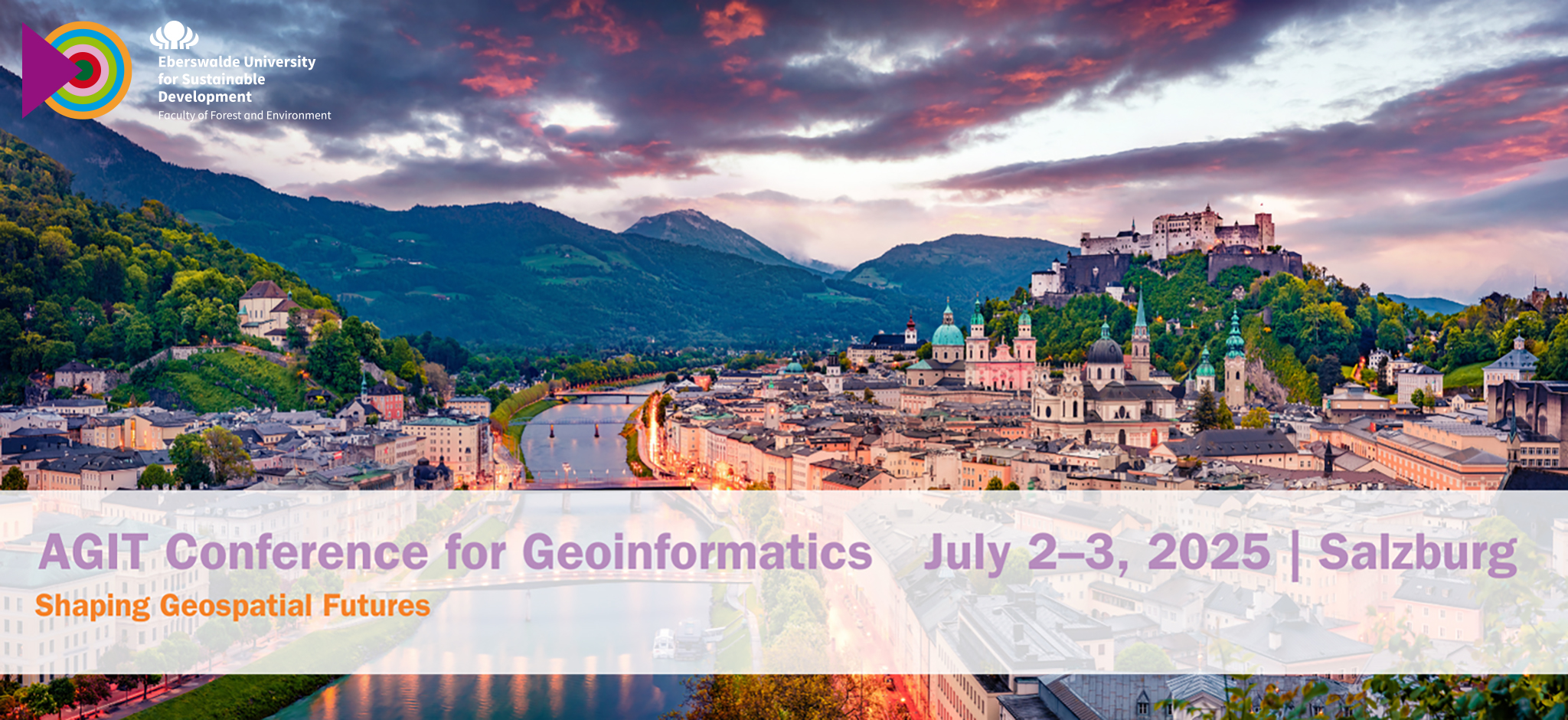The Build4People Work Package (WP) “Urban Green Infrastructures” (UGI) participated at the AGIT 2025 Conference for Geoinformatics, held from July 2–3, 2025, in Salzburg, Austria.
AGIT is a leading platform in for geospatial innovation, applied science, and networking among researchers, industry professionals, and decision-makers. This year’s event brought together experts in geoinformation and spatial analysis to address pressing challenges in urban sustainability, digital transformation, and climate resilience.
The Build4People team contributed with two oral presentations, showcasing advanced remote sensing and machine learning approaches for urban environmental analysis in Phnom Penh, Cambodia.
The first presentation was on assessing the loss of urban waterbodies using a multi-sensor Sentinel and machine learning approach. The study was conducted by HNEE graduate student Ali Diab, WP-UGI Research Associate Gulam Mohiuddin and WP-UGI leader Jan-Peter Mund. Using Sentinel-1 and Sentinel-2 satellite data, the researchers used Support Vector Machine (SVM) classification to detect and quantify water body changes between 2016 and 2023. Their results revealed a 28 sq. km reduction in urban water area, raising important implications for urban heat mitigation and sustainable planning.

The presentation can be accessed at: https://www.researchgate.net/publication/393446440
The second presentation was a comparative analysis of machine learning based land use and land cover classification with an attempt to enhance the class-based accuracy. The study was conducted by HNE graduate student Kazi Jahidur Rahaman, WP-UGI Research Associate Gulam Mohiuddin and WP-UGI leader Jan-Peter Mund. Using Sentinel-2 data from Phnom Penh and applying Random Forest, Support Vector Machine, and Artificial Neural Network algorithms, the team demonstrated how performance varies across land cover classes. The proposed ensemble framework improves both class-wise and overall accuracy by selecting the most accurate algorithm for each specific land cover type. This approach achieved an enhanced F1 Score of 90%, outperforming any individual model. The results offer practical applications in LULC mapping and urban change detection, particularly in complex urban environments.

The presentation can be accessed at: https://www.researchgate.net/publication/393446003
Both presentations received positive feedback for their methodological rigor, practical relevance, and strong visual analysis. By addressing water resource management and land cover monitoring—two key urban sustainability challenges—these studies contribute to evidence-based planning and improved environmental governance in rapidly urbanizing Phnom Penh.

Bibliographic references
Dia, A., Mohiuddin, G., & Mund, J.-P. (2025, July 2–3). Remote sensing-based assessment of loss of water bodies in a tropical urban setting [Conference presentation]. AGIT Conference for Geoinformatics, Salzburg, Austria. DOI: 10.13140/RG.2.2.32900.64642
Rahaman, K. J., Mohiuddin, G., & Mund, J.-P. (2025, July 2–3). Enhancing class-wise accuracy in machine learning-based multiclass land use and land cover classification [Conference presentation]. AGIT Conference for Geoinformatics, Salzburg, Austria. DOI: 10.13140/RG.2.2.10251.40481

